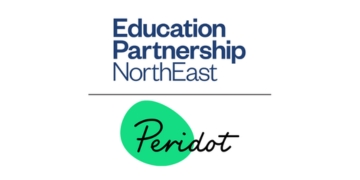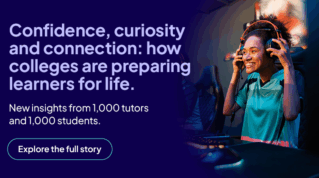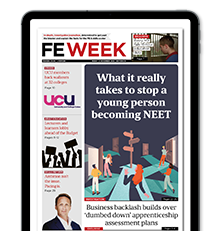When Covid hit, FE colleges scrambled to move online. For many, the priority was simple: get learners a laptop, get lessons onto Teams and keep things ticking over. In that sense, the sector achieved miracles. But now, several years on, it’s clear that digital inclusion must mean more than distributing devices or uploading PowerPoints.
Why this matters now
Almost every employer now demands digital competence. From spreadsheets to hybrid meetings, these skills are as essential as literacy and numeracy. Yet too many learners still leave FE without the confidence or ability to engage with digital tools in the workplace.
At the same time, digital overload is creating new barriers:
- Learners with autism, ADHD or anxiety often report that online spaces can be overwhelming.
- Disadvantaged learners still face patchy Wi-Fi, lack of private study space or insufficient digital skills at home.
If FE is serious about employability and inclusion, it cannot ignore this divide.
What we’ve learned at Apex
At Apex College Leicester, our core digital platform has always been Moodle which we use to structure learning, deliver resources, and manage assessment. To strengthen interaction around that, we introduced Microsoft Teams as a complementary space for workshops, discussion and formative feedback.
The combination worked well:
- Learners reported feeling more supported because communication with tutors became quicker and clearer, with feedback arriving in real time.
- Staff found it easier to track learner progress as there was clear reporting mechanisms such as assignment logs, and live analytics, allowing them to provide more targeted formative feedback.
At the same time, we faced some challenges:
- Digital fatigue – some students found it difficult to stay on the call for the full duration.
- Screen anxiety – some learners were reluctant to turn on their cameras or contribute in the sessions.
- Connectivity inequalities – not all learners had the connectivity to access the online workshops. These were extra optional sessions for learners on top of the compulsory face to face sessions learners had.
These experiences show us that digital inclusion does not mean learners have digital access. A device alone does not guarantee opportunity. Without digital resilience, equity, and wellbeing, the gap only grows.
A new model for digital inclusion
What FE now needs is a model that goes beyond devices and embraces inclusion in its fullest sense. Four pillars stand out:
- Beyond devices – Current training for both staff and learners, not just how these tools are used but in how to integrate them effectively into pedagogy, project work and teamwork.
- Digital wellbeing – Teaching learners how to balance screen time, manage online relationships and build resilience against cyberbullying and misinformation.
- Equity by design – Ensuring all neurodiverse learners and SEND learners have the accessibility to the platforms, including captioning, dictation and adapted learning spaces.
- Employer-aligned skills – Embedding real-world digital tasks into assessments and projects, so this allows learners to be confident on how to use digital technology.
From theory to practice
We’ve seen the benefits of this blended model – Moodle providing the structured learning environment, and Teams adding a layer of collaboration and feedback – play out in practice:
- Business HND group projects were organised through Moodle for resources and assessment, but run collaboratively in Teams. Students worked in shared online spaces, assigned tasks, and tracked progress using project-management tools. One student reflected: “I didn’t just learn business — I learned how to manage a team online, the same way companies do.”
- HND learners also strengthened their digital presentation skills, developing the confidence to plan, rehearse and deliver professional-standard presentations in virtual workshops.
- Tutor collaboration was transformed. While Moodle held the core curriculum materials, Teams gave staff a space to peer-review lesson plans, share best practice, and provide mutual support – reducing isolation and raising teaching standards.
We showed that digital inclusion is not about the tool itself, but about how we embed skills, confidence, and equity into the way those tools are used.
A call to the sector
If digital inclusion is limited to just handing out devices, we are failing are learners and this will affect employers. Preparing learners to thrive using digital technology requires:
- Investing in staff training, not just infrastructure.
- Curriculum redesign to integrate digital skills in each subject, not just as an add-on.
- Sector-wide collaboration to ensure platforms and practices are easily accessible for all learners.
If FE is looking to ensure to prepare learners for life and work, then ensuring digital inclusion must be at its core. This means shifting from access to empowerment.












Your thoughts